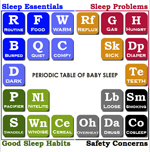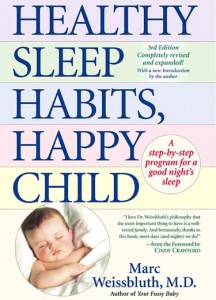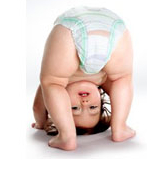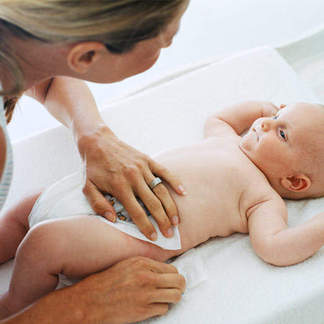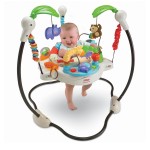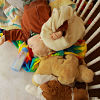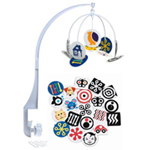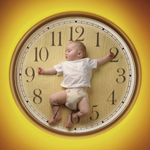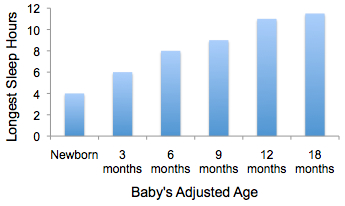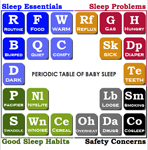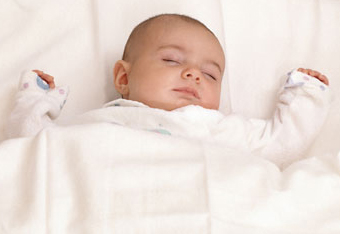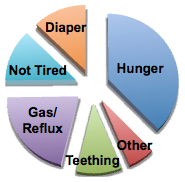 Teaching a baby to sleep through the night requires establishing healthy sleep habits around the clock. Here, we’ll go through five essential baby sleep habits that help babies sleep through the night consistently.
Teaching a baby to sleep through the night requires establishing healthy sleep habits around the clock. Here, we’ll go through five essential baby sleep habits that help babies sleep through the night consistently.
1. Establishing a bedtime routine
The first essential habit is establishing a bedtime routine for your baby. This is the set of steps you’ll go through every night with your baby, starting with dinner and ending with the baby in bed. Setting a routine and sticking to it won’t always be easy, but it teaches your baby that there’s a series of events each night that lead up to bedtime.
The bath-bottle-bed routine is a popular one because it works so well: the warm comfort of the bath gets baby ready for a bottle, and the full belly afterward makes them drowsy. It’s a series of physical cues that prepares your baby for the long sleep. We extend our bedtime routine a bit further with a few minutes of reading to baby, a pacifier, and their favorite blankies.
The downside to a routine is that it can monotonous and take a bit more time than you’d like, but the upside is that a good routine has baby falling asleep on his or her own, the second you put them into the crib.
2. Setting an early bedtime
One of the most surprising sleep habits that makes a huge impact is setting an early bedtime for baby. This seems counter-intuitive, right? Put your baby to bed earlier, and you think he or she would wake up earlier, too. Not so. It turns out that most babies are ready for sleep rather early in the evening. It’s the parents’ routine that keeps them up longer than necessary.
By watching your baby for the first signs of drowsiness and putting him or her to bed as soon as they appear, you may find that an early bedtime has them sleeping more soundly and for a lot longer.
3. Putting baby to sleep in the crib
If your baby already sleeps in the crib every time, congratulations. You already have this important habit established. If instead you’re one of the many parents whose baby sleeps better in the swing or the parents’ bed, or while being held, you have something to work on. Getting a baby to sleep in the crib when that’s not the norm tends to get more difficult by the day.
Start making this transition right away, because having a baby sleep regularly in his or her own bed will make a world of difference for sleep training. It frees up some of your time, too, so that you can do things you haven’t done nearly enough since your little one was born. Like laundry, or showering.
4. Dressing baby for sleep
As parents, we sometimes find ourselves cutting corners. A lack of time, a house full of chores, and sheer exhaustion will do that to you. One area you shouldn’t skimp on is dressing the baby for bed. A good diaper is important for keeping your baby as dry as possible overnight. After that, a comfy set of pajamas to keep them warm. Finally, you should swaddle your baby or put them in a sleep sack or sleeping bag to mimic the snug security of the womb.
5. Offering a pacifier
The last habit may be one of the easiest, and that’s getting your baby to take a pacifier. Most of us have no trouble with this, but I hear occasionally from parents whose baby refuses one. I’m puzzled by this, since those same babies drink readily from bottles tipped with a nipple-shaped piece of rubber. I wonder if instead it’s a matter of finding the right pacifier for your baby.
My boys, for example, won’t take any of the cute Sesame Street pacifiers that we got at showers. Instead, they only take the MAM low-profile pacifiers. See our review of the best baby pacifiers to find one that your baby will love, and then make it part of the bedtime routine. This not only gives your baby a comfort when you put them to bed, but it’s useful for nighttime soothing as well.
What To Read Next
If you like this article, you might want to subscribe by e-mail or RSS so that you’re notified when new content is posted.








